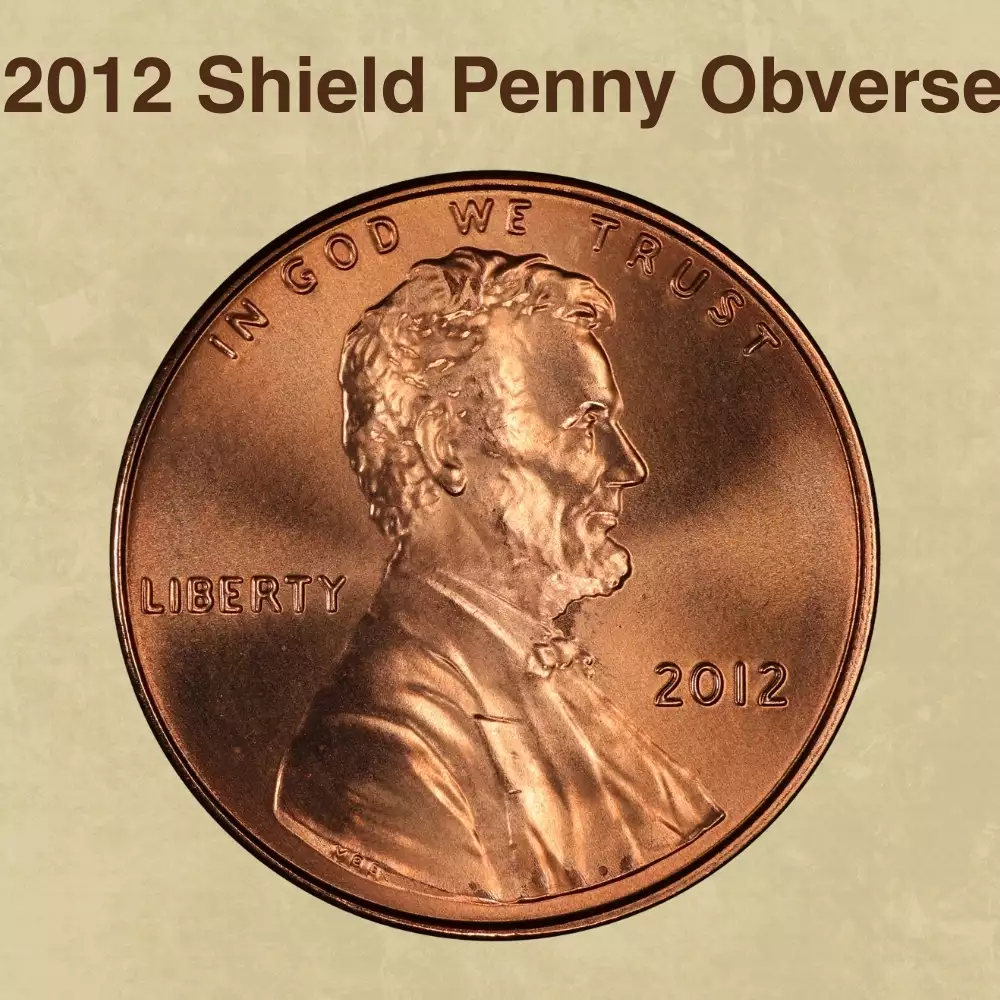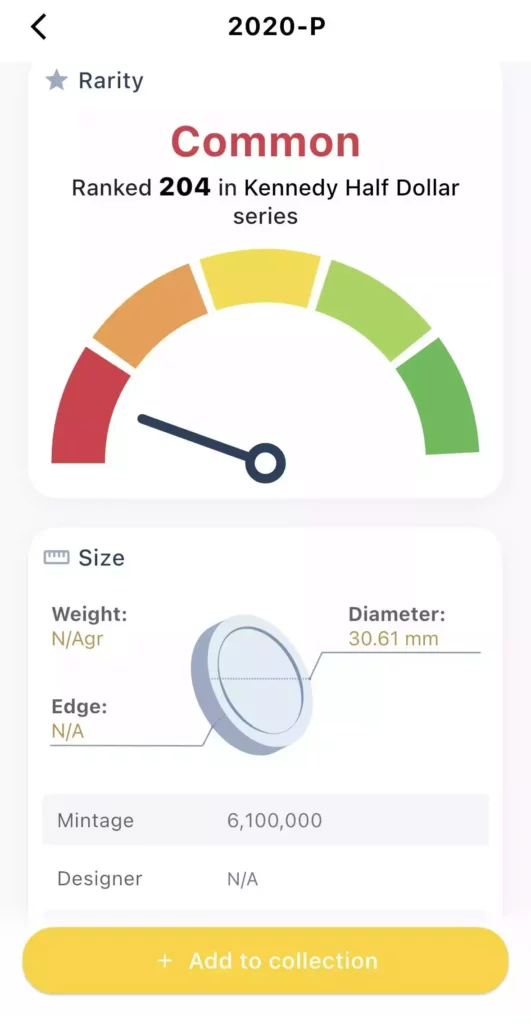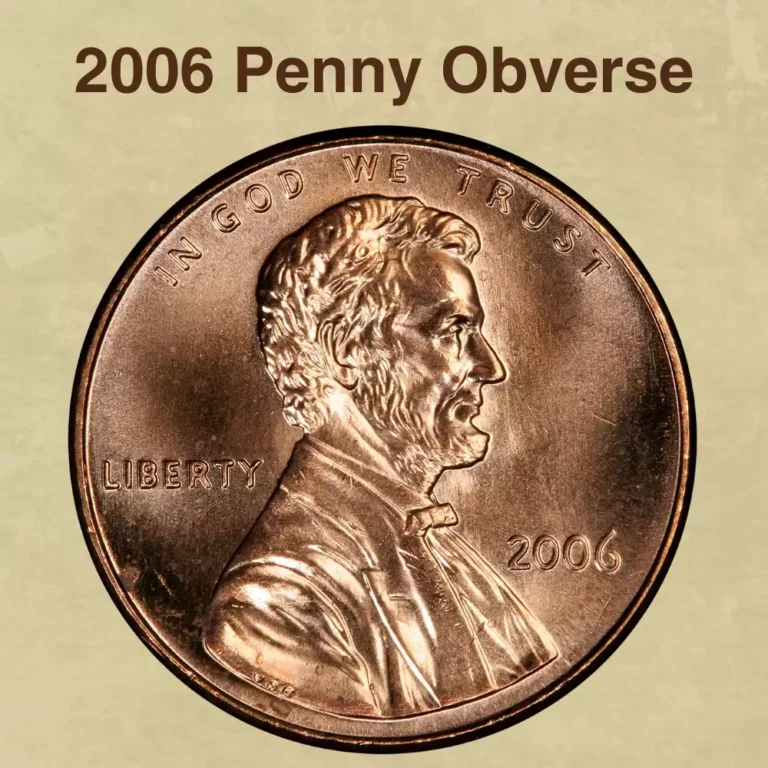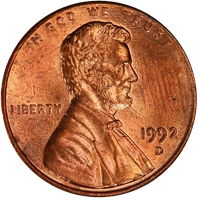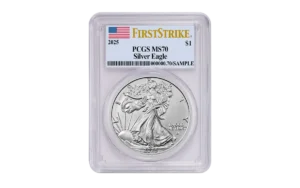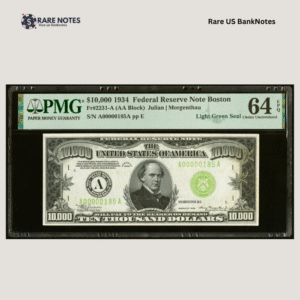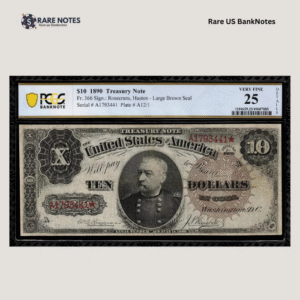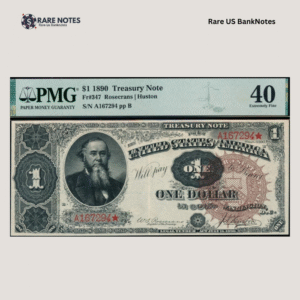Have you ever glanced at that 2012 Shield penny in your change jar and wondered if it might be worth more than its humble face value?
You could be sitting on a small fortune without even knowing it! While the Philadelphia and Denver mints produced billions of these modern Lincoln cents, certain exceptional specimens and rare minting varieties have commanded surprising premiums in today’s collector market.
From pristine mint state specimens that survived a decade of potential handling to fascinating doubled dies and striking errors, let’s explore what makes these seemingly ordinary coins potentially extraordinary treasures hiding in plain sight.
2012 Shield Penny Value By Variety
The 2012 Shield penny value chart below provides a comprehensive overview of what these Shield design cents are worth across different mint marks and conditions, revealing how pristine examples can command hundreds of dollars despite being readily found in circulation.
2012 Shield Penny Value Chart
| TYPE | GOOD | FINE | AU | MS | PR |
|---|---|---|---|---|---|
| 2012 No Mint Mark Shield Penny Value | — | — | — | $102 | — |
| 2012 D Shield Penny Value (RD) | — | — | $1 | $839 | — |
| 2012 S Proof DCAM Shield Penny Value | — | — | — | — | $14 |
Tip: Chart shows Red (RD) prices only. For Brown (BN) or Red-Brown (RB) values, check our CoinValueChecker App for comprehensive information across all color designations.
2012 Shield Penny Market Trend
Market Interest Trend Chart – 2012 Penny
The 2012 Shield penny market trend chart reveals a fascinating evolution in collector interest, with the most dramatic feature being the explosive surge in early 2019 where activity reached extraordinary peaks—likely driven by increased awareness of the Shield design’s collectible potential.
Following several notable spikes throughout the mid-2010s, the market experienced a period of stabilization before witnessing renewed enthusiasm in recent years. The pattern shows multiple secondary peaks and sustained elevated activity compared to earlier baseline levels, suggesting consistent collector engagement with high-grade specimens and error varieties.
This momentum demonstrates that the 2012 penny has evolved from overlooked pocket change into a recognized collectible with genuine market appeal, attracting both seasoned numismatists and new collectors seeking modern treasures.
To see how the 2012 penny’s impressive market performance compares with other modern and classic American coins, explore our comprehensive US Coin Market Trend Ranking (Top 100).
History of the 2012 Shield Penny
The 2012 Shield penny represented the second year of the new Shield reverse design, which had been introduced in 2010 following the conclusion of the Lincoln Bicentennial program. This new reverse replaced the Lincoln Memorial design that had been used since 1959.
The Shield design was created by Lyndall Bass, a graphic artist who won the United States Mint’s national design competition. Her design depicts a Union Shield with a scroll draped across it bearing the inscription “ONE CENT,” surrounded by “UNITED STATES OF AMERICA” and “E PLURIBUS UNUM.”
Like its immediate predecessors, the 2012 Shield penny maintained the post-1982 composition of 97.5% zinc with a thin copper plating, giving it the familiar copper appearance while keeping production costs manageable. The obverse continued to feature Victor David Brenner’s Lincoln portrait, which had graced the penny since 1909.
Production occurred at both Philadelphia and Denver mint facilities, with billions of coins struck to meet circulation demand. San Francisco also produced proof specimens exclusively for collectors, featuring the deep cameo contrast that had become standard for modern proof coinage.
By 2012, the Shield design had become well-established in circulation, representing the new standard for Lincoln cents after the experimental period that included the four commemorative reverse designs of 2009 and the brief return to the Memorial design in 2010 before the Shield’s permanent adoption.
Also Read: 10 Most Historic Years of Modern Lincoln Penny(1959-Date).
Key Features of the 2012 Shield Penny
Let’s examine the distinctive features of the 2012 Shield penny that help identify this modern Lincoln cent with its Shield reverse design and determine its potential value.
The Obverse of the 2012 Shield Penny
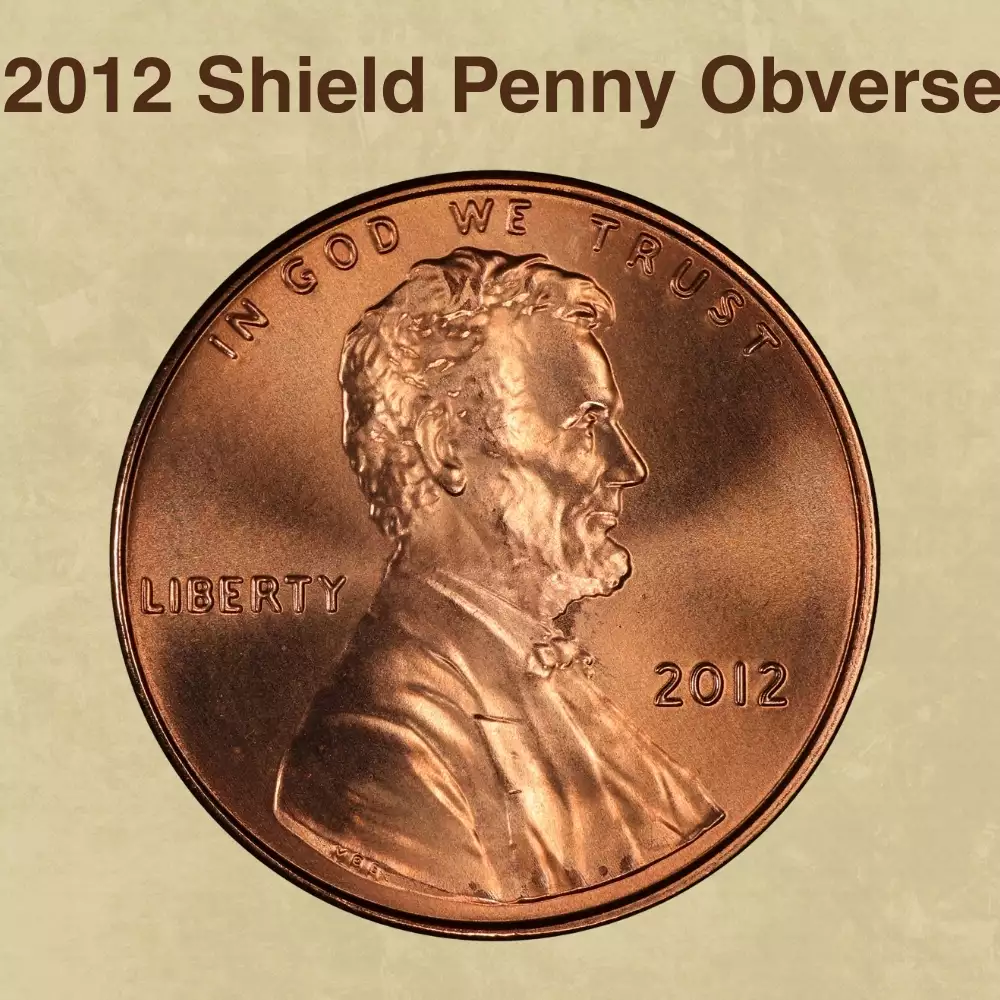
The obverse of the 2012 Shield penny continues the tradition established over a century ago with Abraham Lincoln’s profile facing right. This iconic portrait by Victor David Brenner has remained virtually unchanged since its debut in 1909, creating an unbroken visual link across generations of American coinage.
Lincoln’s bust shows fine detail work, particularly visible in high-grade specimens where the hair texture and facial features remain sharp. The designer’s initials “VDB” can be found at the truncation of the bust, a detail that becomes important for authentication purposes.
The inscriptions follow the traditional layout: “IN GOD WE TRUST” arcs above Lincoln’s head, “LIBERTY” appears to the left of the portrait, and “2012” is positioned to the right. Mint marks, when present, appear directly below the date in small letters.
The Reverse of the 2012 Shield Penny

The 2012 reverse showcases Lyndall Bass’s Shield design, which marked a departure from the architectural theme of previous decades. The Union Shield dominates the center, rendered with thirteen vertical stripes representing the original colonies, topped by a horizontal band symbolizing Congress.
A flowing banner crosses the shield displaying “ONE CENT” in bold letters. The entire composition is framed by “UNITED STATES OF AMERICA” curving along the top rim and “E PLURIBUS UNUM” positioned below the shield.
Unlike the Memorial design’s fine architectural details, the Shield reverse uses broader, more defined elements that tend to strike more consistently across the entire mintage, though die polishing lines and minor variations still create collectible differences.
Other Features of the 2012 Shield Penny
The 2012 Shield penny’s zinc core construction creates unique preservation challenges compared to earlier copper pennies. The thin copper plating can develop spots, streaks, or uneven toning that dramatically affects both appearance and collector value.
Surface quality becomes paramount for 2012 Shield pennies, as even minor imperfections stand out against the Shield design’s clean lines. Collectors particularly prize examples that maintain their original mint luster without the common zinc-related issues like white spots or corrosion.
2012 Shield Penny Mintage & Survival Data
2012 Shield Penny Mintage & Survival Chart
Survival Distribution
| Type | Mintage | Survival | Survival Rate |
|---|---|---|---|
| No Mint | 3,132,000,000 | unknown | unknown |
| D | 2,883,200,000 | unknown | unknown |
| S PR DCAM | 1,239,148 | unknown | unknown |
The 2012 Shield penny mintage and survival data reveals substantial production volumes that characterize modern coinage, with Philadelphia striking over 3.1 billion coins and Denver producing nearly 2.9 billion specimens—combining for more than 6 billion pennies released into circulation during the Shield design’s third year.
These impressive mintage figures demonstrate the continued high demand for pennies in the American economy, with Philadelphia slightly outpacing Denver’s production. San Francisco contributed approximately 1.2 million proof Deep Cameo specimens exclusively for collectors, representing a tiny fraction compared to the massive business strike production.
The survival distribution chart illustrates the overwhelming presence of business strikes in today’s market, with Philadelphia and Denver coins sharing relatively equal representation while proof specimens remain a minimal portion of available examples.
While specific survival rates remain unknown for these modern issues, the sheer volume of original production suggests millions of examples still exist in various conditions.
For comprehensive analysis of survival patterns across all Lincoln cent dates and how the 2012 penny’s preservation compares to other modern and vintage issues, explore the Lincoln Pennies Survival Ranking (Top 100).
2012 Shield Penny Grading
Grading 2012 Shield pennies requires careful attention to the zinc-core composition’s unique preservation challenges, as these coins are particularly susceptible to white spots, corrosion, and uneven toning that can dramatically impact their market value.
The Shield design’s bold, clean lines make surface imperfections more visible than on previous Memorial cents, with even minor contact marks or planchet flaws standing out prominently against the simplified reverse elements.
High-grade examples demand exceptional strike quality and pristine surfaces, as the design’s open fields provide little camouflage for defects.
Color designation remains crucial for 2012 pennies, with brilliant red specimens commanding significant premiums over red-brown or brown examples. The thin copper plating’s tendency to develop spots or streaks over time makes finding truly pristine examples increasingly challenging, creating substantial value gaps between grade levels.
Our CoinValueChecker App can instantly assess your 2012 penny’s grade and potential varieties using advanced image recognition technology, ensuring you don’t miss valuable specimens hiding in plain sight.
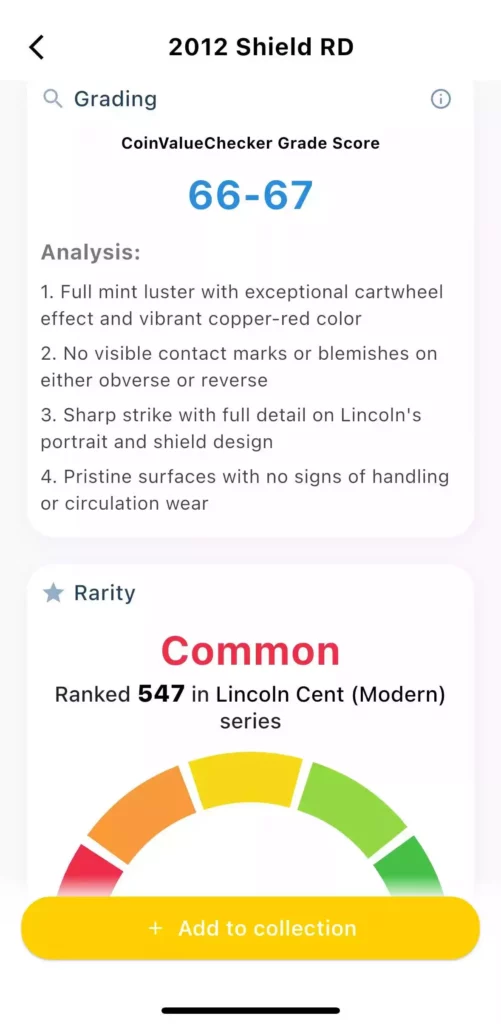
For mastering the complete grading process across all Lincoln cent eras and understanding how zinc composition affects evaluation criteria, explore our comprehensive guide How to Grade Lincoln Pennies.
2012 Shield Penny Value Guides
- 2012 No Mint Mark Shield Penny (Philadelphia)
- 2012-D Shield Penny (Denver)
- 2012-S Proof DCAM ShieldPenny (San Francisco)
The 2012 Shield penny varieties represent distinct collecting opportunities that showcase the second year of this modern design’s production across all three U.S. mint facilities.
Philadelphia and Denver business strikes offer accessible entry points for collectors seeking high-grade examples from massive production runs, while their value spreads demonstrate how condition rarity can transform common coins into valuable specimens.
San Francisco’s proof Deep Cameo offerings provide collectors with specially struck coins featuring sharp contrast and mirror finishes designed specifically for numismatic appreciation.
Whether you’re searching circulation for pristine business strikes, pursuing premium proof specimens, or hunting for valuable minting errors, the 2012 Shield penny series offers multiple pathways for both beginning collectors and seasoned specialists in today’s dynamic market.
2012 No Mint Mark Shield Penny Value

The 2012 No Mint Mark Shield penny represents Philadelphia’s massive production of over 3.1 billion coins, continuing the mint’s historical tradition of producing unmarked coins dating back to 1792. Philadelphia was the only branch in operation in the Mint’s earliest years, so identifying the sources of a coin was not necessary, and this practice has largely continued for Lincoln cents through today.
The Shield design was created by Lyndall Bass and introduced in 2010, featuring thirteen vertical stripes topped by a horizontal band with “ONE CENT” displayed on a draped banner. This design replaced the Lincoln Memorial reverse that had been used since 1959, establishing the current standard for penny production.
From a market perspective, the 2012 No Mint Mark penny demonstrates the fascinating economics of modern numismatics. While all 2012 pennies without a mint mark are worth only their face value if found in circulated or worn condition, exceptional preservation can create extraordinary value jumps.
The most valuable 2012 no mintmark penny was graded MS68+RD by Professional Coin Grading Service and sold for $1,495 in 2018, illustrating how condition rarity transforms common coins into coveted collectibles.
The zinc-core composition with copper plating presents unique preservation challenges, as these coins are particularly susceptible to environmental damage that can dramatically affect their red color designation—the key factor driving premium values in the collector market.
2012 No Mint Mark Shield Penny Price/Grade Chart
Price by 1-70 Grade (Latest Auction Records Included)


